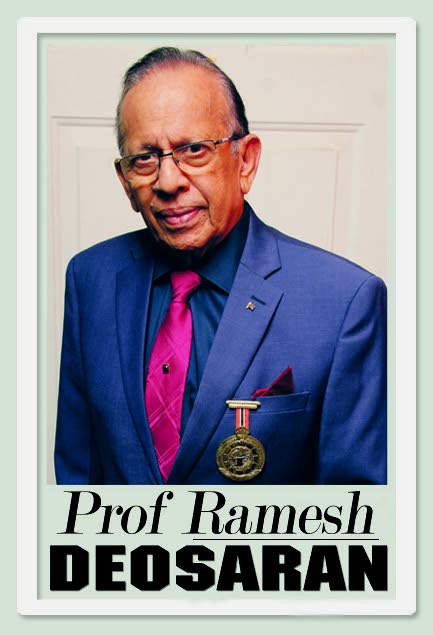Joy, grief in two-face society

Once again, the two-faced nature of our society is exposed.
Last week we witnessed celebrations of some young, bright scholarship winners showing a joyful face. Then facing troubling crime and murders, we saw the dark side – televised gunmen wildly running down one another in broad daylight.
This is a bad start to the new year.
It seems as if young people, like our scholarship winners, will have to learn to adapt and share in the dark challenges. Could they resist the temptation to leave us? We can’t continue to lose our youth – so many have already gone either by plane or by bullets. Is it that the institutions to handle crime and education have reached a point of no return?
The media front-page celebrations of this year’s SEA top achievers and scholarship winners tell us one of our society’s core values is educational competition. There is also the feverish but unfulfilled desire to diminish the consequences of educational inequity. We, therefore, cannot ask questions about youth crime without also reflecting on the schools and homes.
One consequence of the competition, whether SEA or CAPE, is one of narrow ecstasy and widespread agony. It’s the ancient problem of supply and demand – many are called to compete but few are chosen for celebration.
And so we continue to endure this dilemma, a dilemma which presses people to argue over whether or not CAPE or SEA results should be published. Which is of greater interest, the joyful public celebration of the few deserving winners or the saddening embarrassment of the many left out?
But why the “embarrassment?" After all, it is an artificially constructed competition where much talent remains submerged or not counted. The media headline stated: “Non-Govt schools take lion’s share of scholarships.”
And so evidence for the “prestige school” phenomenon lives on. (500 bursaries “soon to be advertised.”) Education Minister Dr Nyan Gadsby-Dolly congratulated all students “who have worked so assiduously and conscientiously to achieve the highest grades across the ten cognitive groups.”
Remarkably, Presbyterian secondary schools got the highest percentage (41 per cent) of scholarships. Of the 100 scholarships, 60 per cent were females. Only two scholarships went to government secondary schools – Scarborough Government Secondary School and Sangre Grande's North Eastern College. Sangre Grande's SWAHA Hindu College joyfully got two.
So what else is new with the “non-government vs government schools” disparity? Will it help if the ministry examines and properly reports what really happens in these prestige schools to achieve success?
Is part of the answer residing, for example, in the “new” Shiva Boys’ Hindu School where apparently teachers and parents quickly injected the competition spirit into the school's climate? But this will not solve the fundamental challenge – whatever the school distribution, scholarships will still be very limited (100). And further, the competition will become more compressed and severe. There will still be joy and grief.
It is a daunting policy challenge for a merit-driven democracy to achieve educational equity in social class, ethnicity, gender or even residence. A country’s development will be stunted if its bright, hard-working students are not properly accommodated.
At the same time, a society will experience social inequity if significant proportions of its ethnic or working-class population fall far behind. Facing such competing principles, it seems the education system is inevitably doomed to produce social inequity. It is a pity that such competition should determine the emotional state and future of so many children – ecstasy for few, agony for many.
It is therefore a matter of how much inequity the society is prepared to tolerate alongside freedom of choice, individual motivation and the controversial Concordat. It’s the real world, conservative thinkers say. Competition is here to stay. To what extent would the 500 bursaries achieve sustainable equity? The published list of scholarships and schools will no doubt inspire parents and students to continue craving first-choice entry into these celebrated “prestige schools” just as reputable universities do. If not today, the competition will come tomorrow.
Of course, Hillview College should be admired for capturing 13 scholarships with two President's Medals – an unprecedented accomplishment. So too for the relatively new Shiva Boys' Hindu College for its historic two open and two additional scholarships – including quite remarkably a girl – Faith Sylvan, with Modern Studies in a boys’ school. The other traditional “prestige” schools have largely maintained their share.
What makes it so difficult for the government secondary schools to win scholarships in Information and Communication Studies, Modern Studies, Environmental Studies, Business Studies, Creative and Performance Studies – apart from Natural Science and Mathematics? Is it the students’ lack of ability, teachers, parental attention, ministry’s management?
My nephew, Varma, worked on homework every evening with his 11-year-old son, Sanjeev. I witnessed a mixture of discipline and prioritised duty. Sanjeev chose Hillview as his first choice and got in. Witnessing his cultivated study habits, and his sharing of leisure and studies, I know we will hear more about Sanjeev.
Each year, you must listen to the comments by teachers and parents of SEA top students and scholarship winners. It’s always about hard work, sacrifice, parental support, goal-setting, and a disciplined and balanced lifestyle. The reward is usually great joy and a successful, lawful life.

Comments
"Joy, grief in two-face society"